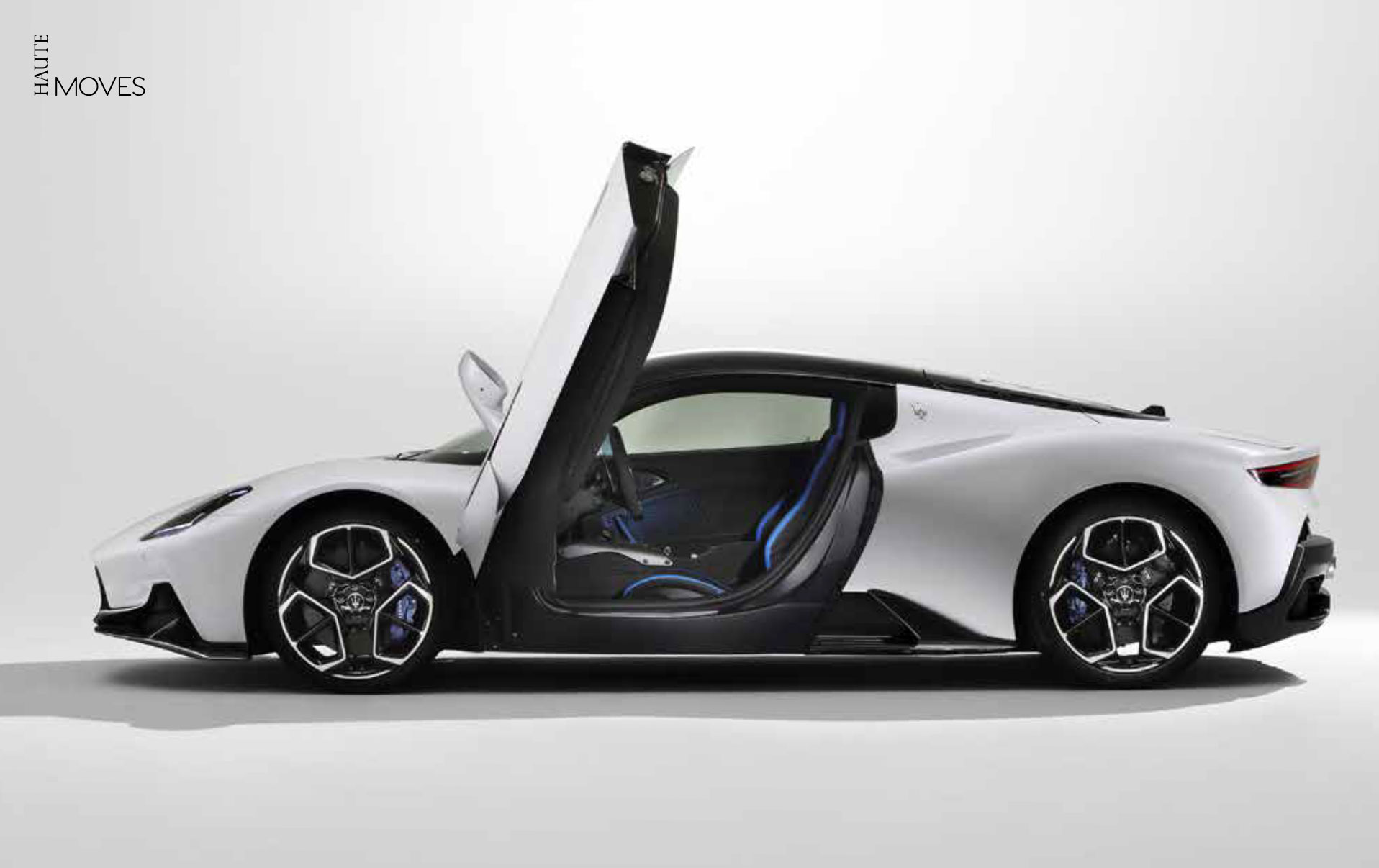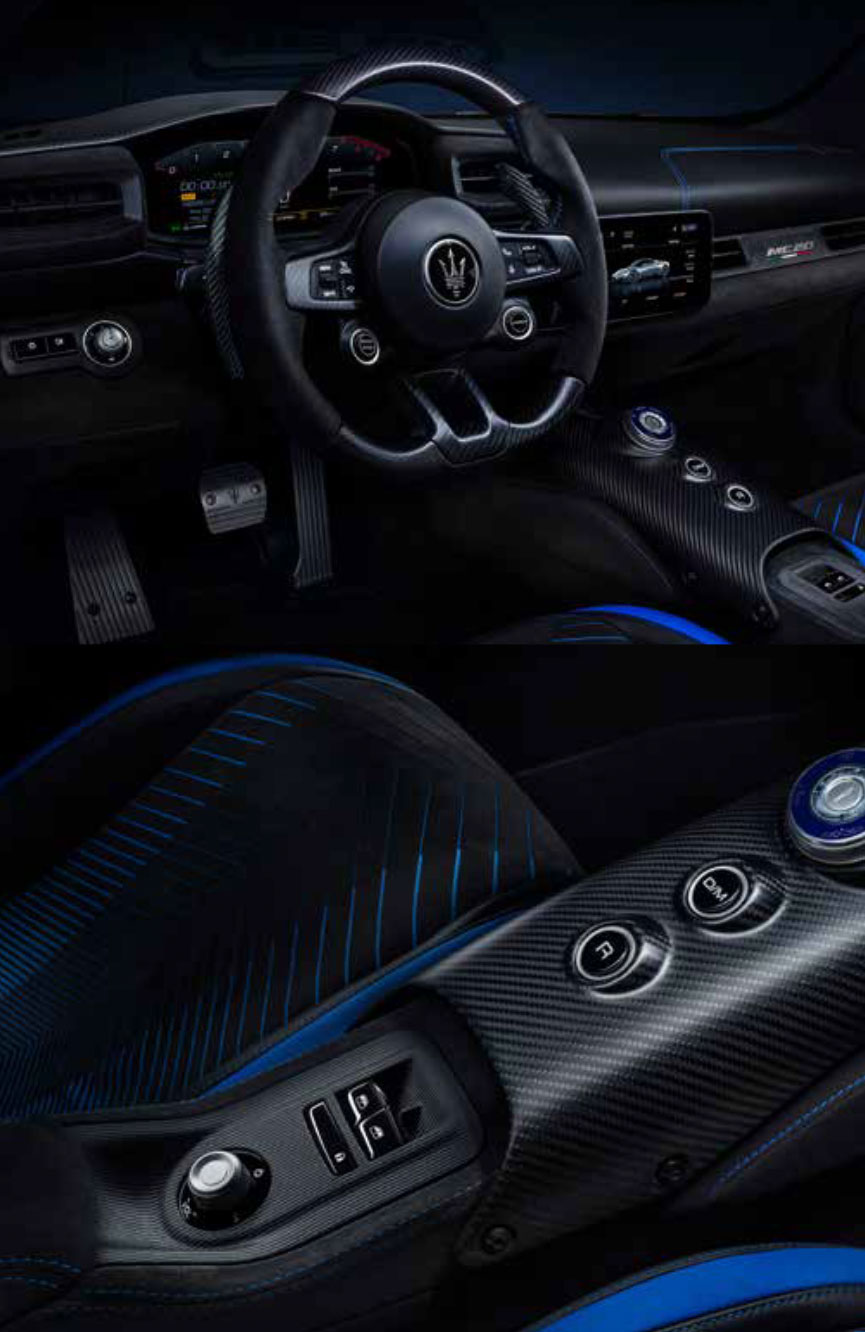2023 Maserati MC20

The Return of the Trident’s Edge
MASERATI WAS FOUNDED IN 1914 — LONG BEFORE MANY OF ITS eventual competitors, such as Jaguar, Ferrari, Porsche, and certainly Lamborghini — and its roots are with great racing machines and sports cars released through the 1960s. In fact, their “Tipo 61,” which became known as the “Maserati Birdcage” due to its beautiful tubular space frame, was one of the most desirable cars from that era (1959-1961), and the few remaining (less than 25 were constructed) are worth millions of dollars. I had the pleasure of seeing one, with the body off, and it’s truly a magnificent work of art.
However, apart from the very capable Gran Turismo (GT), which was manufactured from 2007 to 2019, most Masers offered in the United States in recent years have been two- and four-door sedans. And when SUVs arrived, there wasn’t a sports car in the lineup for many years. Maserati did create a cousin of the Enzo in 2004, called the MC12, but that model was only made for a few years, and a total of just 62 were built. Its main purpose was to qualify a racing variant of the car for the FIA GT Championship (the racing league required a certain number of road-going variants to be produced in order for the model to be able to participate).
From 1997 to 2005, Maserati and Ferrari had common ownership, and one of Maserati’s selling points was that its vehicles were powered by Ferrari engines. And while the Quattroporte luxury sedan was a big seller, especially starting with the 2014 Quattroporte VI, it seemed like the Maserati spirit of racing cars was lost in a world of sedans. But then, in 2020, the MC20 debuted. Maserati hailed the model as its “Super Sports Car” — and I, like many car aficionados, couldn’t have been more pleased. (The name came from “Maserati Corse” [Racing Maserati] and the “20” was for the year 2020.)
I first saw that beautiful sports car at Pebble Beach during Monterey Car Week that same year, at the Maserati House, and though it was on static display, the car looked to be in motion. With a gorgeous, light-blue body, the MC20 looked amazing. It would be another several months before I was lucky enough to borrow one for a multi-day loan, and it certainly was worth the wait! This two-seater coupe with a rear mid- engine is a race car for the street and was built to combine gorgeous Italian looks with an engine that was designed after those in Formula 1 cars.
“My” MC20 was liveried in an optional misty color called “Bianco Audace” — an off-white exterior with a black and gray interior. The base


car was $212,000, but someone with good (and expensive) taste ordered it with a boatload (or shall I say “barchetta load”) of add-ons, such as the custom matte paint ($14,000); carbon ceramic brakes ($10,000); a black roof ($4,000); carbon fiber here, there, and everywhere (more than $50,000); a racing interior ($2,500); racing seats ($7,000); and more — bringing the total (before tax and license) to over $315,000. I liked all the choices and didn’t find one that I would have excluded.
Driving the car was a real treat, too. Maserati created the engine this time (code-named “Nettuno”) rather than sourcing a Ferrari option. The MC20 sports a V6 twin turbo engine with 3,000 cubic inches, producing 621 horsepower and 538 pound-feet of torque, which is enough oomph to rocket this 3,306-pound car from zero to 60 mph in under three seconds, on the way to a top speed north of 200 mph. And did I mention the 8,000 RPM redline, which emits a wonderful scream at full throttle?
I liked driving the MC20 as it was a great blend of performance and comfort. Entry and exit were effortless (which is not always the case with butterfly dihedral doors like these), with no compromise to the ergonomics of driving to achieve great looks and performance. The handling was exact as well and had both the tightness of a sports car in the twisties and a supple, compliant ride on the straights. Although the engine sounded amazing at full honk, there was ample power to move with alacrity at less than full throttle so that the car could easily be driven at normal (that is, legal) speeds with much less sound and fury. The seats in mine were the monocoque racing seats, but I still found them both comfortable and supportive. The eight-speed transmission was sharp and smooth-shifting but also shifted swiftly upon hard acceleration. The MC20 only is available with a paddle shift; like many modern performance cars, it’s not available with a stick shift transmission. Rearward visibility is terrific, thanks to a video monitor fed by a camera at the rear — a nice touch as the camera’s wide angle is far more effective than a traditional rear-view mirror, especially when a car (as is the case with the MC20) has a constrained “natural” view. In the calmest of the three driving modes (GT), the MC20 seems somewhat sedate, but jump up to Sport or Corsa (the latter being my preferred modus operandi), and you get the Italian aria befitting a car of its stature. I love its song!
My time with the MC20 was too short, but I will be borrowing the MC20 Cielo (convertible version), and who knows, I might be among the first to experience the all-electric version of the MC20, which Maserati has promised soon, or even the MCXtreme, the full-race, track-only variant of the MC20, which I saw unveiled at The Quail in August (all 62 units have been sold). Whatever top or motor your MC20 has, you’re sure to have an enjoyable time.


Sorry, the comment form is closed at this time.